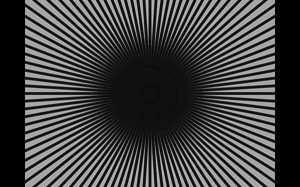From The Brooklin Rail by Leo Goldsmith and Rachael Rakes
Experimental film seems to occupy an increasingly marginal place in contemporary cinema. Even as microcinemas and local scenes and collaboratives continue to proliferate, what should be cinema’s most vital form remains, for most, the sideshow attraction to commercial cinema’s decaying mainstage. Running against this current, the Ann Arbor Film Festival is a distinct platform for experimental work in that it is its city’s main film festival, attracting big audiences and major business community support from the college town in which it has played for 52 years. Each year, for almost a week, downtown’s Michigan Theater is taken over by a wide range of new abstract, non-narrative, and otherwise unclassifiable work sourced from around the world, creating a space where the current strands of the avant-garde don’t seem totally marginalized, relegated to more peripheral venues and self-selecting audiences.
But just what is experimental cinema? These days, based on the selections of Ann Arbor and other festivals of its kind (such as Images, Crossroads, Migrating Forms, and Views from the Avant-Garde), it’s a combination of work that resembles “classic” avant-garde film, as in hand-processed, abstract, or structuralist 8 or 16mm film; irony-toned video art; works of editing from archive; or non-narrative nonfiction. Sometimes these types overlap, but they also don’t necessarily hang together in a cohesive way, either. What they do more or less all share is a general lack of commodifiability—and the artistry and dedication that attends this status—which is precisely why it’s crucial that those festivals, microcinemas, and local scenes continue to intervene.
To read the whole release please visit website


Comments are closed.